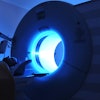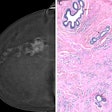Dear AuntMinnie Member,
While COVID-19 is known as being a disease that affects primarily the respiratory system, we're starting to learn more about its effects in other parts of the body -- such as the brain.
Researchers from Ohio have discovered that neuroimaging features of stroke can include altered mental status and acute ischemic stroke, features that are visible on CT and MRI scans. Our article on their study was the top story of the past week on AuntMinnie.com.
Would your patients agree to be scanned in a giant plastic bag if it reduced their exposure to SARS-CoV-2 infection? A group from the U.S. National Institutes of Health created a human-sized isolation bag to address the issue of CT room decontamination after scanning. They believe the bag could enable sites to speed up workflow while keeping patients and staff safe.
And in another study, researchers from New York City found that more than three-quarters of chest CT scans for COVID-19 in children are negative. This indicates that CT may not be the best modality to use for scanning kids, who are more sensitive to the effects of radiation than adults.
Get these stories and more in our CT Community.
RSNA goes virtual
It was a shock, but perhaps no surprise. The RSNA on May 26 announced that it has decided to cancel the in-person version of its annual meeting in Chicago and instead hold the event as a virtual conference due to concerns about the COVID-19 pandemic.
The RSNA's move was a shock because the annual meeting has been held without interruption since the 1940s. Yet it was no surprise because the pandemic has wiped out pretty much every other medical meeting on the calendar.
Stay tuned for more details on the RSNA's plans for this virtual event.
Environmental gadolinium
Finally, visit our MRI Community for the latest study on the persistence of gadolinium from MRI contrast in the environment.
Japanese researchers found that levels of gadolinium in rivers in Tokyo have risen sharply in the last two decades. The increase correlates with growth in the number of MRI scanners in the metropolis and an aging population that needs imaging scans.
Our MRI Community also featured two articles on women's imaging this past week: first, a story on how U.K. researchers used MRI to discover a new type of contraction during pregnancy, and second, a story on the use of breast MRI for screening women at higher risk of cancer.
You'll find more articles like this in the MRI Community.



















